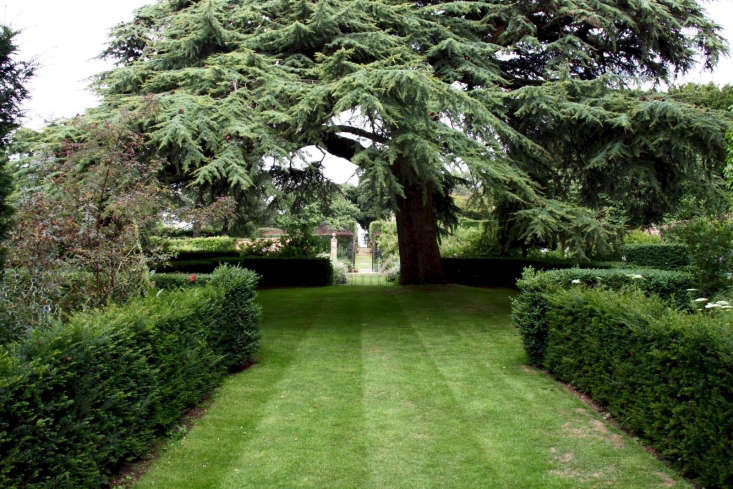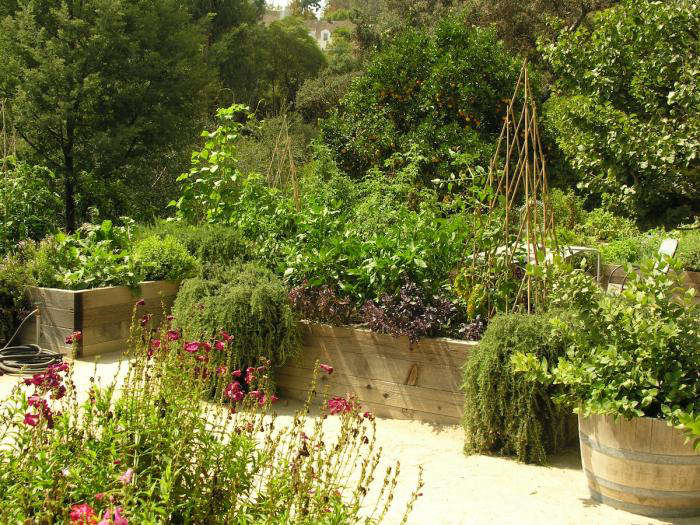Asked to visualize picture-postcard, rural England, most people would imagine a scene from the Cotswolds. Thanks to a band of limestone that stretches diagonally across England, this sprawling area is rich in the natural mellow stone used in grand manor houses, chocolate-box villages, and the beautiful stone walls that mark all the local boundaries.
This hilly area is rich in drama and the perfect free-draining soil needed to easily establish the most lavish gardens. But even if your gardening climate is more challenged, you can steal ideas from the Cotswold. Here are 10:
1. Make Garden Rooms

The early decades of the 20th century were a rich time for garden design, and in the Arts & Crafts tradition many exciting new gardens were created using garden rooms as an extension of the house—that is, dividing a garden into clearly defined areas with different themes, moods, or styles, all of which were protected with tall hedges, stone paths, and tightly clipped topiary. At Hidcote, Lawrence Johnston created one of the most famous and enduring examples of the style. Use yew, hornbeam, or beech hedges to divide spaces and if possible consider the long vistas between the ‘rooms’.
2. Build a Wall

There is no more beautiful boundary treatment than a dry stone wall. Beautifully crafted, using ancient skills, strong and sturdy enough to withstand centuries of wear and tear, these structures also add an incredible textural element to gardens. Better still, these elegant walls work in any situation from cool contemporary spaces to classic cottage gardens.
3. Color Theme Borders

At Hidcote’s near neighbor, Kiftsgate Court, Johnston’s friend Heather Muir made a garden packed with rich planting and color-themed borders, approaching the design like an interior decorator. Lush borders abound at all of the Cotswolds’ best-loved gardens, but the romantic combinations of pink and purple or blue and yellow in sophisticated palettes at Kiftsgate, which is surrounded by enormous dramatic pines, takes some beating.
4. Design a Parterre

It may sound very grand but you can create a parterre—that is an ornamental arrangement of beds, commonly divided by low boxwood hedging—on almost any scale to introduce a sense of formality and evergreen structure. Take inspiration from the elaborate knot garden at Barnsley House which were designed by the legendary Rosemary Verey in 1950s.
5. Source a Temple

While Verey was designing the gardens at Barnsley House, her husband David was adding another favorite Cotswold feature—a classical, whimsical folly. The stone temple that still stands in the gardens today was added in 1962 after being bought at Fairford Park.
6. Clip Tall Topiaries

Notable Cotswolds gardens share a time-honored obsession with statuesque topiaries. When Emma Keswick created the stunning gardens at Rockcliffe House, topiary created a series of focal points; two lines of towering beech obelisks draw the eye across a long lawn, theatrical avenues of topiarized birds lead to a stone dovecote, and box balls and domes create commanding views down paths and long walks.
7. Plant Towering Hedges

Enclosing gardens rooms with dramatic tall hedges in yew, hornbeam, or beech is a key component of many Cotswolds—and indeed English—gardens, especially when they are crisply clipped into interesting shapes. At Highgrove, the Gloucestershire country house of the Duke and Duchess of Cornwall, the hedges echo the formal architectural details with yew clipped into elegant “walls” complete with finials, buttresses and windows.
8. Nurture a Meadow

Highgrove boasts many other quintessentially English features including a four-acre wildflower meadow that was originally conceived using 130 different species that echoed the wildflower meadows of the past, complete with a formal avenue of fastigiate hornbeams. A rich tapestry of bulbs adds to the evolving palette and the meadow is cut annually and then grazed with sheep.
9. Add a Kitchen Garden

A beautiful potager is a key feature of the mellow stone manor houses that are dotted throughout the Cotswolds but you can take inspiration from them and create your own more modestly proportioned version. At Daylesford’s immaculate kitchen garden in Gloucestershire, symmetrical beds are made with woven willow hurdles and the paths are covered in soft-hued limestone gravel. The organic produce is picture perfect too.
10. Make Deep Borders

For serious impact, make your borders as deep as possible. At Pettifers, a private garden in Oxfordshire just north of the Cotswolds, the atmospheric borders are vast – allowing space for huge swaths of richly colored perennials and textural grasses which light up the garden in late summer and autumn.
N.B.: See more ideas to steal, from….









Have a Question or Comment About This Post?
Join the conversation